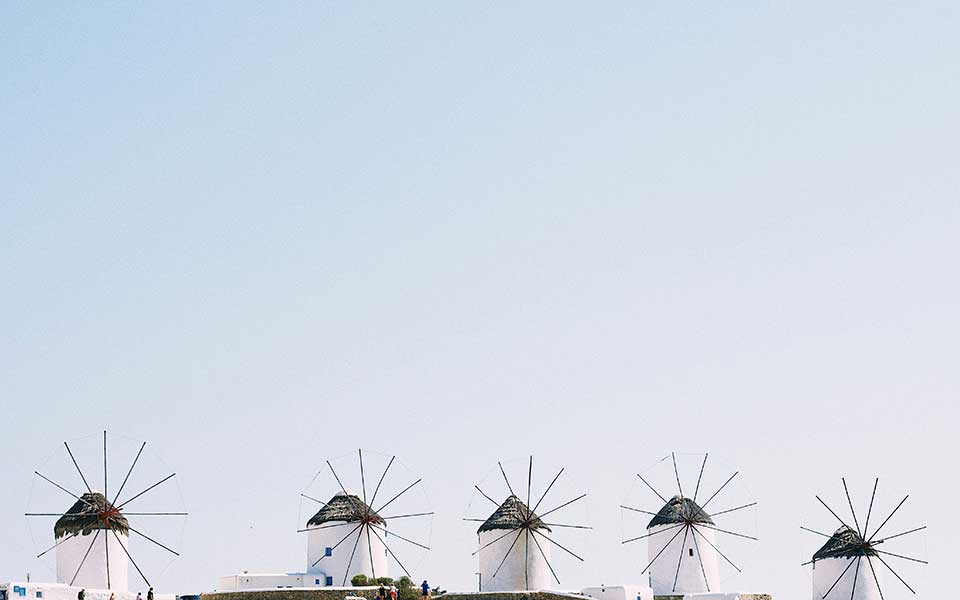Cycladic society has many matriarchal elements, and Mykonos shows clear evidence of this. To this day, the family home is still part of the daughter’s inheritance rather than the son’s, and the eldest daughter always takes the name of her maternal, not her paternal, grandmother. Even in earlier times, when gender inequality was more pronounced, Mykonian women did not follow the traditional roles prevalent in other small rural communities.
Before the advent of tourism, when the island was impoverished and water and other resources were scarce, the women of Mykonos were the bedrock of society. While the men of the island were busy fishing or working on ships, the women of Mykonos, familiar with both the private and public spheres, would deal not only with cooking and child rearing, but farming and important decision-making as well.
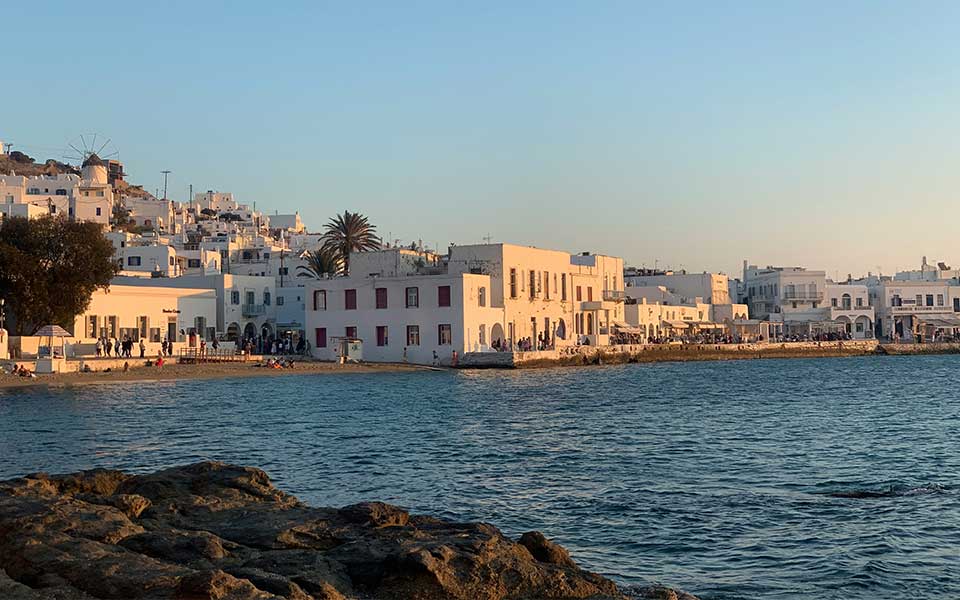
© Unsplash
The hotelier, the weaver, the merchant
The difficult living conditions and the need for survival cultivated persistence, industriousness, flexibility and adaptability in the women of Mykonos, characteristics that laid the groundwork for the island to become what it is today. They have not been awarded as much credit as they deserve, yet it was the determination and ingenuity of Mykonian women that allowed Mykonos to differentiate itself from the average Cycladic island and to chart its own course. These characteristics, combined with the island’s proximity to Delos, have made Mykonos into the island that we know today.
Excavations on Delos began in 1873 by the French Archaeological School and continued into the early decades of the 20th century. Archaeology enthusiasts who traveled the Aegean on their journey to the birthplace of Apollo passed through Mykonos, admired its beauties and stayed for a few days. And where did they stay? In Mykonian houses, on beds made for them by Mykonian women. Families would retire to back rooms or courtyards to sleep, surrendering the choicest accommodations to their guests. Alongside the hospitality they provided, the women of the island were skilled at the loom; they were talented weavers who turned sheep’s wool into rugs, covers and dresses for their loved ones, and also sold these woven goods to the island’s visitors.
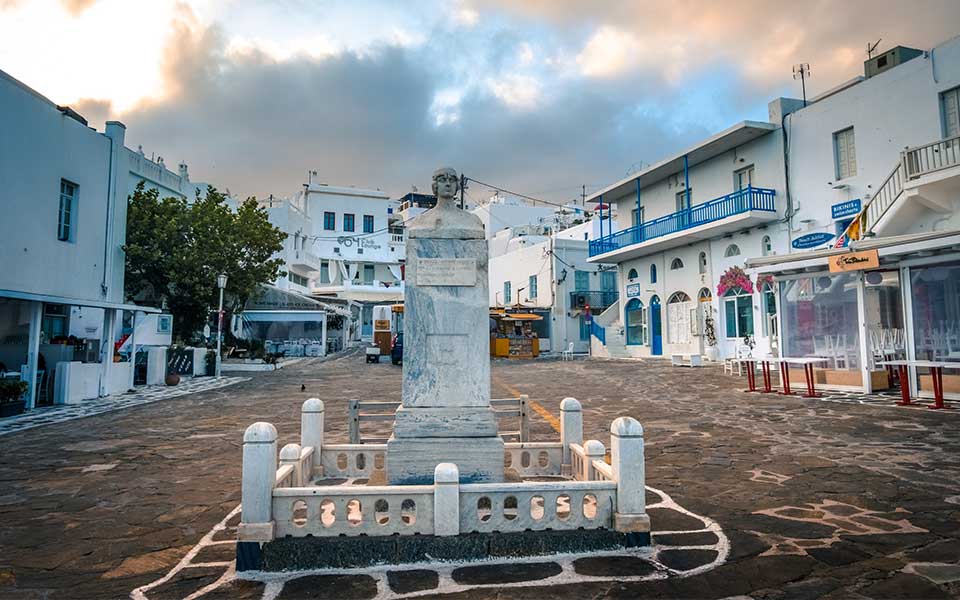
© Shutterstock
Manto, Melpo and Maria
Along with the myriad anonymous women who helped the island through difficult times, there were three in particular who are not only known to history, but who have transcended the narrow boundaries of the island to garner national acclaim. These three left profound marks on different fields, ranging from war to literature to the visual arts. Manto Mavrogenous (c. 1796-1840), born in Trieste to a father from Paros and a mother from Mykonos, earned her spot in the pantheon of Greek heroes during the 1821 Greek War of Independence by funding the war effort and, according to most accounts, leading defenders in battle against raiding Algerian pirates allied with the Ottomans. Her contribution at the time was not fully appreciated by the Greek political and intellectual establishment – this only took place after her death.
Writer Melpo Axioti (1905-1973) is perhaps the most well-known Greek poetess of her generation after Maria Polydouri. She embraced political causes, traveled, married, divorced and left a significant legacy in poetry and prose, a body of work influenced by surrealism and feminism.
Maria Igglesi (1882-1942) is the least known of the three, a pioneering painter who, in addition to her art, also worked in journalism. She lived in Italy and became an expert on its museums and monuments, regularly sending reports on the arts to the Greek press.
In addition to a bust honoring her in the town square, the great Manto is also commemorated by the summer movie theater Cine Manto, while Maria Igglesi is remembered in the Municipal Art Gallery of Mykonos, housed in her family’s home.
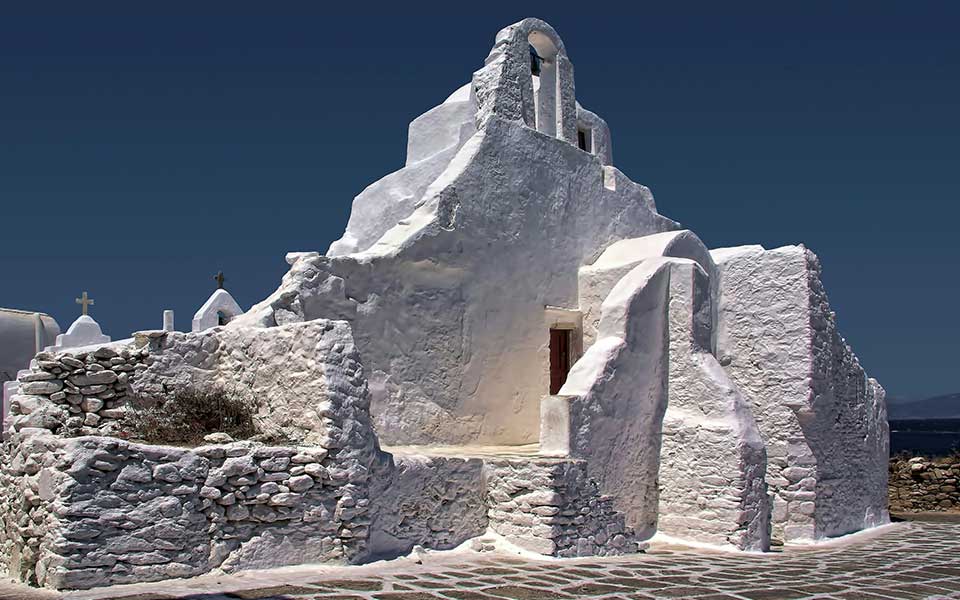
© Unsplash
The Virgin Mary
As on every Cycladic island, so, too, on Mykonos is the Virgin Mary cherished in the hearts of the people. In the past, almost every house had at least one chapel dedicated to the Mother of God or to other saints. Even in less affluent households, people made sure to build a small chapel in their field where anyone could worship. Since the 1970s, however, and the onset of a rash of thefts, family chapels have been locked and are now only opened upon request to the owner.
The Panagia (“Virgin Mary”) of Kouzis is one such private chapel, where the worship of the Virgin Mary took on a distinctly Mykonian character through an association with Georgoulis Kouzis, the mayor of Mykonos during the 1950s and 1960s.
In addition to the private chapels, three of the most well-known Mykonian churches or chapels dedicated to the Virgin Mary are the bright white Paraportiani (located between the old port and Little Venice), a beautiful church resembling a grand sculpture, the Cathedral Great Panagia (also known as Panagia Pigaditissa or Angelohtismeni or Zoodohos Pigi), and Panagia Tourliani in Ano Mera. During Lent, the icon from the Panagia Tourliani is carried in a procession to one of the three parish churches in Hora. This year it is being hosted by Aghia Kyriaki), where it will remain, so that people can pay their respects, until Lazarus Saturday (which this year falls on April 27th).
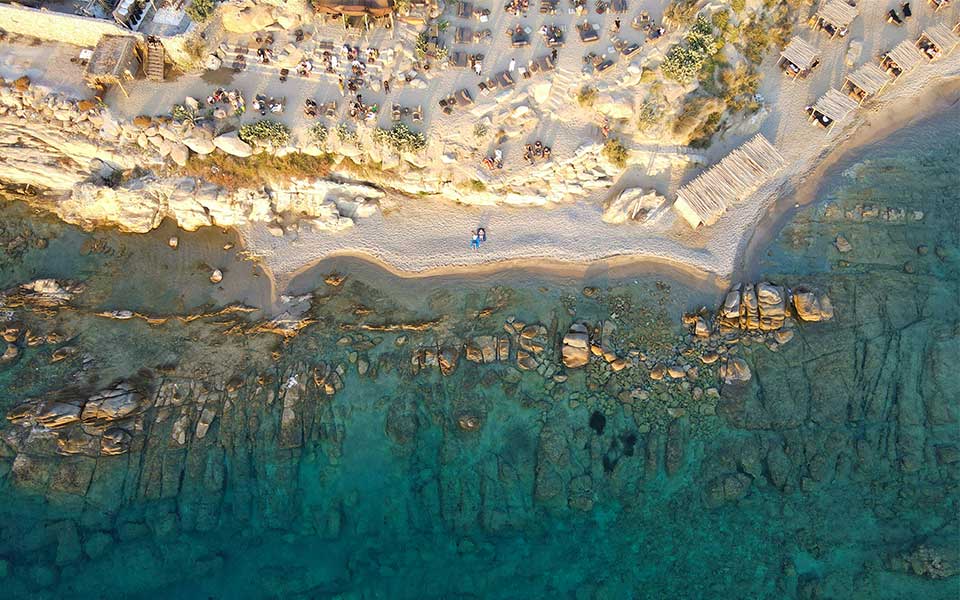
© Unsplash
History and Helen of Troy
Above Ftelia Beach, in the large enclosed bay in the north of the island, stretches a Neolithic city covering seven acres and dating back to 5000 BC, where the foundation stones of rectangular buildings, rare jewelry, pottery, figurines, a model ship and a child’s cremated and ritually buried remains were discovered.
On the opposite – or southern – side, on a hill above Platis Gialos at Portes, the remains of a tower with a diameter of 3.5 meters have survived. Here, you’ll find a colossal ancient doorway formed by two upright granite megaliths crowned by a third one.
However, the most amazing archaeological find ever uncovered on the island may be one where the female element is unexpectedly highlighted; it can be found in the Archaeological Museum of Mykonos. The “Mykonos Pithos,” a burial jar from 670 BC, stands 1.4 meters tall; it was discovered in 1961 in the well of a Mykonian house. Nineteen distinct scenes on the vessel’s neck and body narrate the sacking of Troy. Depictions feature a number of female protagonists and include Helen meeting Menelaus; Trojan women trying to protect their children from the frenzy of the Achaeans; the seer Cassandra; Hector’s wife, Andromache; and other scenes illustrating the horror of war in a composition unique in the Cyclades.
We extend our deep gratitude to Anna Athymariti, president of the Cultural and Folklore Association of Women of Mykonos, for the information she provided us regarding the role of women in Mykonos. More information on the association’s work is available on its Facebook page.

